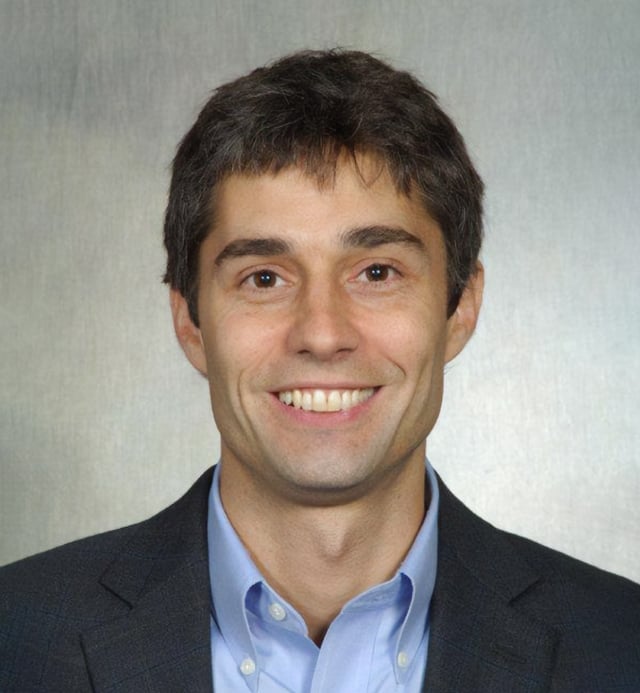-
Expanding Occupational Licensing in Health Care: A Q&A with Professor Brian Phelan
Some decisions of state-level occupational licensing boards have been the target of antitrust litigation in recent years, with claims that the boards were restricting competition in the fields they oversaw. To explore the issues being debated in these cases, Managing Principal Jee-Yeon Lehmann and Vice President Samir P. Warty spoke with Brian Phelan, Associate Professor and Driehaus Fellow at DePaul University.
Professor Phelan coauthored a 2022 paper titled “Occupational Licensing and the Healthcare Labor Market”1 that examined the impact of states easing occupational licensing requirements of nurse practitioners (NPs) to expand their scope of practice (SOP) into services previously restricted to physicians. In this discussion, Professor Phelan addressed potential impacts of SOP expansion on labor demand, labor supply, and quality control in the US health care market.
Your research touches on the ways that occupational licensing for NPs may – or may not – impact labor markets in the health care sector. Could you first define occupational licensing, and then talk about why it raises competition questions?

Brian Phelan: Associate Professor of Economics and Driehaus Fellow, DePaul University Driehaus College of Business
In brief, an occupational license is a license issued by a state that allows an individual to engage in paid employment in a particular profession in that state. Occupational licenses are becoming increasingly common throughout the US, with about a quarter of all employment currently requiring a license.
In the health care sector, states typically set up different licensing boards for different professions, such as nursing, dentistry, or physical therapy. States often put licensing requirements in place in an attempt to ensure some degree of quality control for professions that promote the public good.
However, from a competitive economics point of view, licensing requirements also act as a restraint on entry. In controlling who is allowed to provide services, licensing may run the risk of unnecessarily raising prices and limiting access to those services, which can prompt antitrust concerns.
For that reason, some stakeholders argue that easing existing occupational license requirements, especially in the health care sector, is a way of expanding access to services and lowering costs. However, this potential for increased access needs to be balanced by the state’s legitimate interest in ensuring quality of service provided by the profession.
The US Supreme Court’s 2015 decision in North Carolina State Board of Dental Examiners v. Federal Trade Commission [FTC] let stand a lower court ruling that opened up state occupational licensing boards to antitrust scrutiny under certain conditions. How does the North Carolina ruling factor into this debate?
Essentially, the ruling in North Carolina and other recent Supreme Court decisions made it easier for professional associations – and other private organizations – to use federal antitrust laws to pursue greater access and lower costs. The court in North Carolina reconsidered the scope of state-level immunity from US antitrust laws, as it relates to the state’s role in issuing and applying for occupational licenses. The court found that state licensing boards – which often are composed almost entirely of licensed professionals who have their own private practices – do not possess an antitrust exemption unless they are actively supervised by the state.
In North Carolina, the court sided with the FTC, agreeing that tooth whitening [the service at issue] is not a service that requires a dental license. The court held that the licensing board’s restrictions preventing non-dentists from performing these services amounted to an unreasonable restraint on trade that was not protected by state immunity because the board lacked sufficient oversight.
The court’s ruling increases the likelihood that the actions of state licensing boards will be subject to federal antitrust oversight. This especially relates to challenges over the specific SOP within a license – that is, the set of actions that an occupational license allows licensed providers to legally perform.
Your research focuses on the effects of expanding SOP for nurse practitioners. What did you find out about concerns raised over demand for nurse practitioners and the access patients have to primary care?
Our research examined how labor markets could be impacted if SOPs for NPs were expanded to allow NPs to practice independently and without physician oversight. The broader goal of our work was to assess the impact of SOP rules on health care costs and access to services.
Using data on job postings from Burning Glass Technologies, we found that expanding SOP increased the labor demand for NPs – as measured by the number of job postings seeking NPs – by about 30 percent in states that adopted these policies, relative to postings in states that did not.
Interestingly, this substantial increase in demand occurred without any decrease in demand for other health care professionals, including PCPs [primary care physicians], physician assistants, and registered nurses. That is, the increase in demand for NPs did not cannibalize labor demand for other health care workers. We found this was equally evident in both Health Professional Shortage Areas [HPSAs] and non-HPSAs.
Did your research show any impact on the earnings or placements of health care professionals, given the increased demand for NPs?
We assessed how this increase in labor demand manifested itself in terms of equilibrium outcomes – that is, the balance of supply and demand. Using data on health care workers in the American Community Survey [ACS], we found that earnings for NPs increased, but there did not appear to be an overall increase in the number of employed NPs. In other words, supply was not keeping up with demand, likely due to the inelastic nature of labor supply in skilled professions.
What we saw instead was that NPs were reallocating their employment across the health care sector. They were moving away from employment at hospitals and toward places where NPs are more likely to engage in primary care, including self-employment, physician offices, and outpatient care centers.
Increasingly, non-price factors such as quality and innovation are being brought up in litigation involving claims of anticompetitive effects. How might this play out in professions subject to occupational licensing, and particularly in health care markets, where quality of care and access have significant weight?
On the quality side, physician groups have argued for some time that expanded SOP for NPs [and other health care providers] lowers the quality of care. However, a number of studies have found that allowing NPs to practice without physician oversight did not lead to any change in service quality, with some studies even reporting modest improvements in patient outcomes.
Additionally, my own research found that health care employers increase their demand for NPs when states expand NP SOP, but there were no measurable changes in what employers were looking for in terms of requisite skills. This implies that health care employers are not overly concerned about the possibility that NPs could be providing inferior care.
Regarding questions of access and cost, my research results suggest that expanding SOP has the potential to increase the number of primary care providers and lower health care costs through the substitution of services away from physicians and towards cheaper NPs. However, the data that we analyzed do not show large increases in access, at least over the four-year period we analyzed. Thus, it is hard to imagine that service costs decline by much.
Ultimately, all of these complex interactions among the different market forces need to be considered when trying to sort out the competitive effects of a given occupation licensing requirement. The net effects will vary from context to context. ■
Endnote- Dillender, M; Lo Sasso, AT; Phelan, BJ; Richards, MR; “Occupational Licensing and the Healthcare Labor Market,” National Bureau of Economic Research Working Paper Series VL - No. 29665, January 2022.


